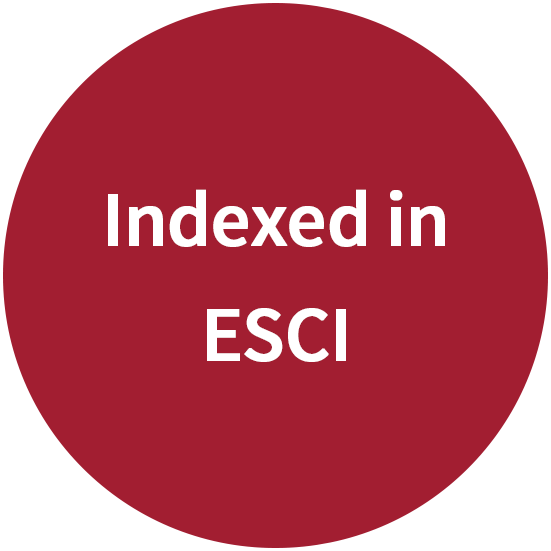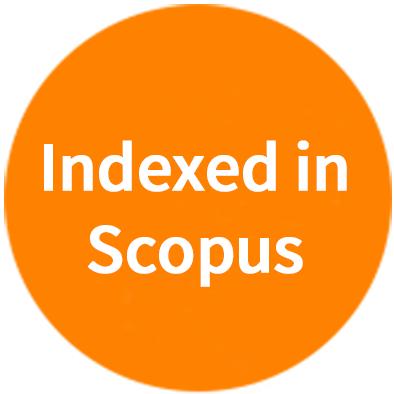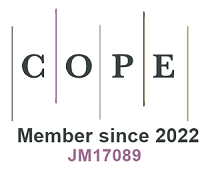REFERENCES
1. Piel FB, Rees DC, DeBaun MR, et al. Defining global strategies to improve outcomes in sickle cell disease: a lancet haematology commission. Lancet Haematol. 2023;10:e633-86.
2. Pinto VM, Balocco M, Quintino S, Forni GL. Sickle cell disease: a review for the internist. Intern Emerg Med. 2019;14:1051-64.
3. Brousseau DC, Owens PL, Mosso AL, Panepinto JA, Steiner CA. Acute care utilization and rehospitalizations for sickle cell disease. JAMA. 2010;303:1288-94.
4. Dampier C, LeBeau P, Rhee S, et al. Comprehensive Sickle Cell Centers (CSCC) Clinical Trial Consortium (CTC) Site Investigators. Health-related quality of life in adults with sickle cell disease (SCD): a report from the comprehensive sickle cell centers clinical trial consortium. Am J Hematol. 2011;86:203-5.
5. Carroll CP, Haywood C Jr, Fagan P, Lanzkron S. The course and correlates of high hospital utilization in sickle cell disease: evidence from a large, urban medicaid managed care organization. Am J Hematol. 2009;84:666-70.
6. Ballas SK. Current issues in sickle cell pain and its management. Hematology Am Soc Hematol Educ Program. 2007:97-105.
7. Pinto VM, Mazzi F, De Franceschi L. Novel therapeutic approaches in thalassemias, sickle cell disease, and other red cell disorders. Blood. 2024;144:853-66.
8. Hebbel RP, Osarogiagbon R, Kaul D. The endothelial biology of sickle cell disease: inflammation and a chronic vasculopathy. Microcirculation. 2004;11:129-151.
9. Hebbel RP, Belcher JD, Vercellotti GM. The multifaceted role of ischemia/reperfusion in sickle cell anemia. J Clin Invest. 2020;130:1062-72.
10. Kalish BT, Matte A, Andolfo I, et al. Dietary ω-3 fatty acids protect against vasculopathy in a transgenic mouse model of sickle cell disease. Haematologica. 2015;100:870-80.
11. Francis RB, Johnson CS. Vascular occlusion in sickle cell disease: current concepts and unanswered questions. Blood. 1991;77:1405-1414.
12. Field JJ, Ballas SK, Campbell CM, et al. AAAPT diagnostic criteria for acute sickle cell disease pain. J Pain. 2019;20:746-59.
13. Boonstra AM, Stewart RE, Köke AJ, et al. Cut-off points for mild, moderate, and severe pain on the numeric rating scale for pain in patients with chronic musculoskeletal pain: variability and influence of sex and catastrophizing. Front Psychol. 2016;7:1466.
14. Darbari DS, Brandow AM. Pain-measurement tools in sickle cell disease: where are we now? Hematology Am Soc Hematol Educ Program. 2017;2017:534-41.
15. De Franceschi L, Mura P, Schweiger V, et al. Fentanyl buccal tablet: a new breakthrough pain medication in early management of severe vaso-occlusive crisis in sickle cell disease. Pain Pract. 2016;16:680-7.
16. Hehn CA, Baron R, Woolf CJ. Deconstructing the neuropathic pain phenotype to reveal neural mechanisms. Neuron. 2012;73:638-52.
17. Kehlet H, Dahl JB. The value of “multimodal” or “balanced analgesia” in postoperative pain treatment. Anesth Analg. 1993;77:1048-56.
18. Osunkwo I, Andemariam B, Minniti CP, et al. Impact of sickle cell disease on patients’ daily lives, symptoms reported, and disease management strategies: results from the international sickle cell world assessment survey (SWAY). Am J Hematol. 2021;96:404-17.
19. Hanna M, Montero Matamala A, Perrot S, Varrassi G. Delivery of multimodal analgesia to effectively treat acute pain: a review from roma pain days. Cureus. 2022;14:e22465.
20. Savarese JJ, Tabler NG Jr. Multimodal analgesia as an alternative to the risks of opioid monotherapy in surgical pain management. J Healthc Risk Manag. 2017;37:24-30.
21. Knisely MR, Pugh N, Kroner B, et al. Sickle Cell Disease Implementation Consortium. Patient-reported outcomes in sickle cell disease and association with clinical and psychosocial factors: report from the sickle cell disease implementation consortium. Am J Hematol. 2020;95:1066-74.
22. Haywood C Jr, Beach MC, Lanzkron S, et al. A systematic review of barriers and interventions to improve appropriate use of therapies for sickle cell disease. J Natl Med Assoc. 2009;101:1022-33.
23. Ji RR, Xu ZZ, Gao YJ. Emerging targets in neuroinflammation-driven chronic pain. Nat Rev Drug Discov. 2014;13:533-48.
24. McClish DK, Penberthy LT, Bovbjerg VE, et al. Health related quality of life in sickle cell patients: the PiSCES project. Health Qual Life Outcomes. 2005;3:50.
25. Minniti C, James J, Andemariam B, et al. Use of opioids in patients with sickle cell disease (SCD): a country and age analysis of the international sickle cell world assessment survey (SWAY). https://library.ehaweb.org/eha/2020/eha25th/294008/caterina.minniti.use.of.opioids.in.patients.with.sickle.cell.disease.%28scd%29.a.html. [Last accessed on 17 Mar 2025]
26. Pinto VM, Gianesin B, Sardo S, et al. Safety and efficacy of ketorolac continuous infusion for multimodal analgesia of vaso-occlusive crisis in patients with sickle cell disease. Orphanet J Rare Dis. 2024;19:22.
27. L DF, G F, A V, et al. A pilot study on the efficacy of ketorolac plus tramadol infusion combined with erythrocytapheresis in the management of acute severe vaso-occlusive crises and sickle cell pain. Haematologica. 2004;89:1389-91.
28. Forni GL, Finco G, Graziadei G, et al. Development of interactive algorithm for clinical management of acute events related to sickle cell disease in emergency department. Orphanet J Rare Dis. 2014;9:91.
29. Marcolino MS, Oliveira JAQ, D’Agostino M, Ribeiro AL, Alkmim MBM, Novillo-Ortiz D. The impact of mHealth interventions: systematic review of systematic reviews. JMIR Mhealth Uhealth. 2018;6:e23.
30. Moreno-Ligero M, Moral-Munoz JA, Salazar A, Failde I. mHealth intervention for improving pain, quality of life, and functional disability in patients with chronic pain: systematic review. JMIR Mhealth Uhealth. 2023;11:e40844.
31. Piette JD, Newman S, Krein SL, et al. Patient-centered pain care using artificial intelligence and mobile health tools: a randomized comparative effectiveness trial. JAMA Intern Med. 2022;182:975-83.
32. Shah N, Jonassaint J, De Castro L. Patients welcome the sickle cell disease mobile application to record symptoms via technology (SMART). Hemoglobin. 2014;38:99-103.
33. Anderson LM, Leonard S, Jonassaint J, Lunyera J, Bonner M, Shah N. Mobile health intervention for youth with sickle cell disease: impact on adherence, disease knowledge, and quality of life. Pediatr Blood Cancer. 2018;65:e27081.
34. Elander J, Bij D, Kapadi R, et al. Development and validation of the satisfaction with treatment for pain questionnaire (STPQ) among patients with sickle cell disease. Br J Haematol. 2019;187:105-16.
35. Abrams C, Davila N, Melvin C, et al. Engagement with incharge app - a mobile health intervention to improve adherence to hydroxyurea among individuals with sickle cell disease. Blood. 2023;142:1144.
36. Smith WR, Penberthy LT, Bovbjerg VE, et al. Daily assessment of pain in adults with sickle cell disease. Ann Intern Med. 2008;148:94-101.
37. Crosby LE, Ware RE, Goldstein A, et al. Development and evaluation of iManage: a self-management app co-designed by adolescents with sickle cell disease. Pediatr Blood Cancer. 2017;64:139-45.
38. Jonassaint CR, Shah N, Jonassaint J, De Castro L. Usability and feasibility of an mHealth intervention for monitoring and managing pain symptoms in sickle cell disease: the sickle cell disease mobile application to record symptoms via technology (SMART). Hemoglobin. 2015;39:162-8.
39. Crosby LE, Hood A, Kidwell K, et al. Improving self-management in adolescents with sickle cell disease. Pediatr Blood Cancer. 2020;67:e28492.
40. Crosby LE, Ware RE, Joffe NE, Britto MT. Reply to iManage: a novel self-management app for sickle cell disease. Pediatr Blood Cancer. 2017:64.
41. Wakefield D, Bayly J, Selman LE, Firth AM, Higginson IJ, Murtagh FE. Patient empowerment, what does it mean for adults in the advanced stages of a life-limiting illness: a systematic review using critical interpretive synthesis. Palliat Med. 2018;32:1288-304.
42. Villaboni S, Gianesin B, Casale M, et al. SCD MED ALERT, a novel mHealth for acute pain management, contributes to the empowerment of patients with sickle cell disease. Blood. 2024;144:1140-1140.
43. Forni G, Balocco M, Casale M, et al. Algoritmo per la gestione in pronto soccorso degli eventi acuti nei pazienti affetti da anemia falciforme. Collana Scientifica SITE Opinione di esperti. 2019. Available from: http://www.site-italia.org/file/Triage_SCD.pdf. [Last accessed on 11 Mar 2025].
44. Graffigna G, Barello S, Bonanomi A, Lozza E, Hibbard J. Measuring patient activation in Italy: translation, adaptation and validation of the Italian version of the patient activation measure 13 (PAM13-I). BMC Med Inform Decis Mak. 2015;15:109.
45. Zhou L, Bao J, Setiawan IMA, Saptono A, Parmanto B. The mHealth app usability questionnaire (MAUQ): development and validation study. JMIR Mhealth Uhealth. 2019;7:e11500.
46. Visser E, Fraaij P, Hoogenboom A, et al. Prevalence and impact of fatigue in children with primary immunodeficiency disorders: a quantitative single-center study. J Clin Immunol. 2022;42:1223-9.
47. Hengenius JB, Ehrenkranz R, Zhu X, Glynn NW, Huppert TJ, Rosano C. Fatigue and perceived energy in a sample of older adults over 10 years: a resting state functional connectivity study of neural correlates. Exp Gerontol. 2024;188:112388.
48. Gianesin B, Piel FB, Musallam KM, et al. Italian Hemoglobinopathies National Survey Group. Prevalence and mortality trends of hemoglobinopathies in Italy: a nationwide study. Haematologica. 2025; doi: 10.3324/haematol.2024.286886.
49. Xu JZ, Thein SL. The carrier state for sickle cell disease is not completely harmless. Haematologica. 2019;104:1106-11.
50. Hibbard JH, Stockard J, Mahoney ER, Tusler M. Development of the patient activation measure (PAM): conceptualizing and measuring activation in patients and consumers. Health Serv Res. 2004;39:1005-26.
51. Hibbard JH, Mahoney ER, Stockard J, Tusler M. Development and testing of a short form of the patient activation measure. Health Serv Res. 2005;40:1918-30.
52. Green CA, Perrin NA, Polen MR, Leo MC, Hibbard JH, Tusler M. Development of the patient activation measure for mental health. Adm Policy Ment Health. 2010;37:327-33.
53. Packer TL, Kephart G, Ghahari S, Audulv Å, Versnel J, Warner G. The patient activation measure: a validation study in a neurological population. Qual Life Res. 2015;24:1587-96.
54. Hussein WF, Bennett PN, Carrasco A, et al. Changes in patient activation in people starting dialysis: a prospective longitudinal, observational study. Hemodial Int. 2022;26:435-48.
55. Lara-Cabrera ML, Salvesen Ø, Nesset MB, De las Cuevas C, Iversen VC, Gråwe RW. The effect of a brief educational programme added to mental health treatment to improve patient activation: a randomized controlled trial in community mental health centres. Patient Educ Couns. 2016;99:760-8.
56. Gagnon J, Probst S, Chartrand J, Lalonde M. mHealth app usability questionnaire for stand-alone mHealth apps used by health care providers: canadian French translation, cross-cultural adaptation, and validation (Part 1). JMIR Form Res. 2024;8:e50839.
57. Petracca F, Tempre R, Cucciniello M, et al. An electronic patient-reported outcome mobile app for data collection in type a hemophilia: design and usability study. JMIR Form Res. 2021;5:e25071.
58. McClish DK, Smith WR, Dahman BA, et al. Pain site frequency and location in sickle cell disease: the PiSCES project. Pain. 2009;145:246-51.
59. Taylor LE, Stotts NA, Humphreys J, Treadwell MJ, Miaskowski C. A review of the literature on the multiple dimensions of chronic pain in adults with sickle cell disease. J Pain Symptom Manage. 2010;40:416-35.
60. Rees DC, Kilinc Y, Unal S, et al. A randomized, placebo-controlled, double-blind trial of canakinumab in children and young adults with sickle cell anemia. Blood. 2022;139:2642-52.
61. Azizoddin DR, Adam R, Kessler D, et al. Leveraging mobile health technology and research methodology to optimize patient education and self-management support for advanced cancer pain. Support Care Cancer. 2021;29:5741-51.
62. Costa E, Isgrò A, de Montalembert M, Leufkens HGM, Ware RE, De Franceschi L. Successes and pitfalls in orphan drug development for sickle cell disease. Blood Adv. 2024;8:2455-65.
63. Sop DM, Crouch T, Zhang Y, Lipato T, Wilson J, Smith WR. Feasibility and quality validation of a mobile application for enhancing adherence to opioids in sickle cell disease. Healthcare. 2022;10:1506.
64. Dunsmuir D, Wu H, Sun T, et al. A postoperative pain management mobile app (panda) for children at home after discharge: usability and feasibility. JMIR Perioper Med. 2019;2:e12305.
65. Chakravorty S, Tallett A, Witwicki C, et al. Patient-reported experience measure in sickle cell disease. Arch Dis Child. 2018;103:1104-9.
66. Clayton JM, Butow PN, Tattersall MH, et al. Randomized controlled trial of a prompt list to help advanced cancer patients and their caregivers to ask questions about prognosis and end-of-life care. J Clin Oncol. 2007;25:715-23.
67. Richardson K, Cert PG, MacLeod R, Kent B. Ever decreasing circles: terminal illness, empowerment and decision-making. J Prim Health Car. ;2:130-5.
68. Olsman E, Willems D, Leget C. Solicitude: balancing compassion and empowerment in a relational ethics of hope-an empirical-ethical study in palliative care. Med Health Care Philos. 2016;19:11-20.








